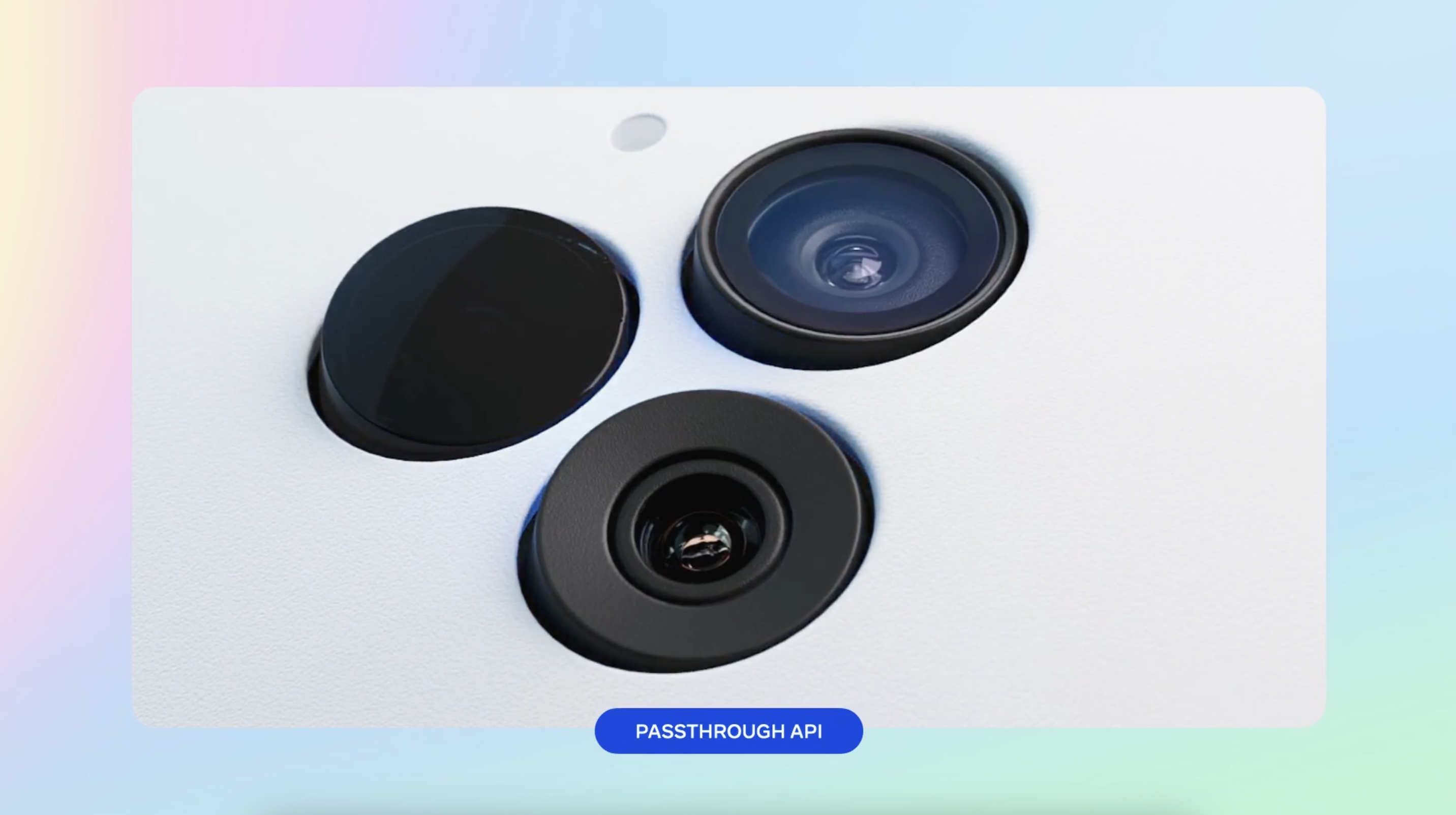
The published support documents for Meta Quest headsets indicate an imminent release of Meta’s new Passthrough API.
The post Meta Quest’s new passthrough API appears on support page appeared first on MIXED Reality News.


The published support documents for Meta Quest headsets indicate an imminent release of Meta’s new Passthrough API.
The post Meta Quest’s new passthrough API appears on support page appeared first on MIXED Reality News.
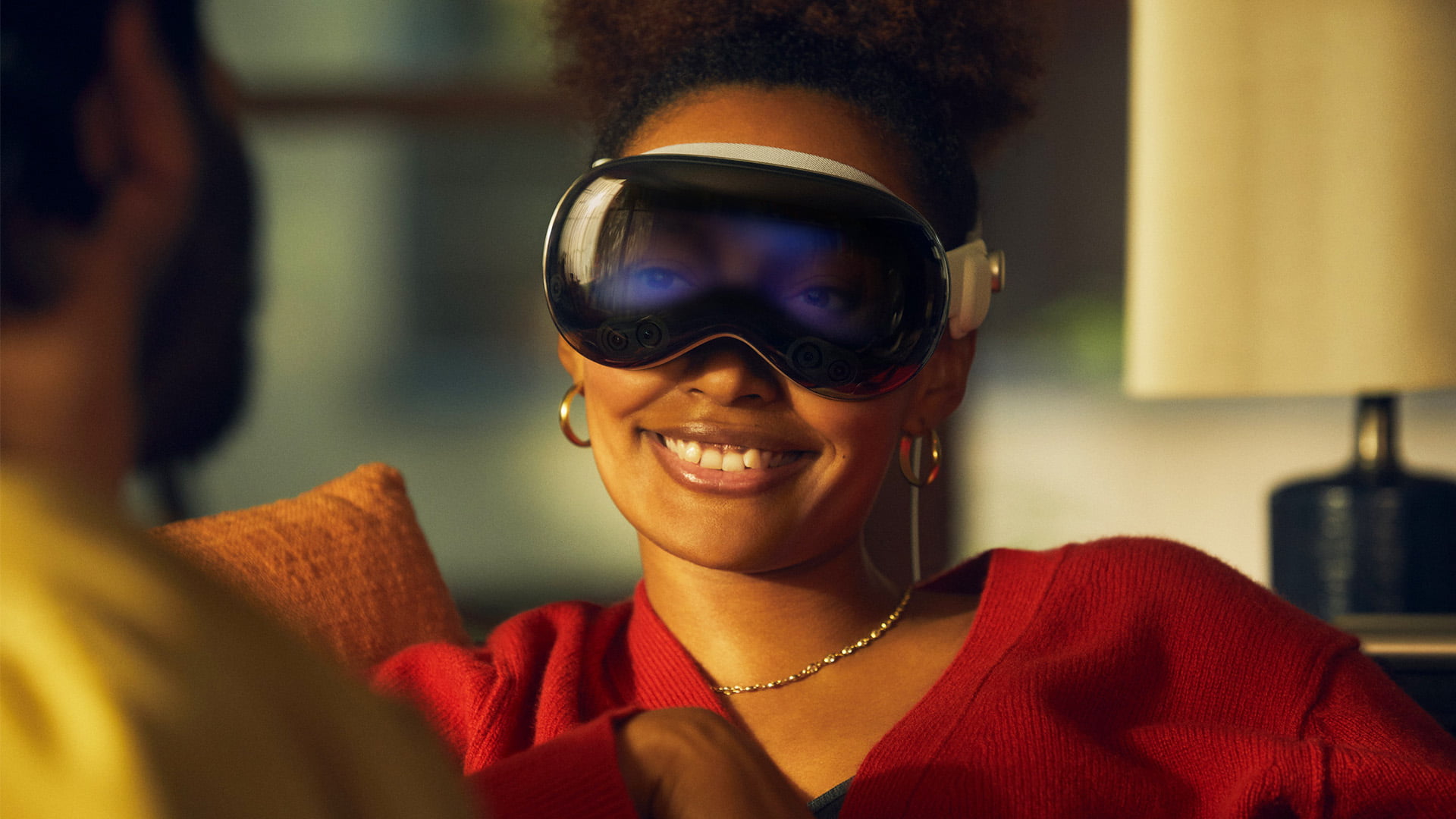
Apple’s new Spatial Gallery for Vision Pro offers spatial experiences and photographs from well-known artists and brands.
The post Apple Vision Pro gets Spatial Gallery with visionOS 2.4 Beta 2 appeared first on MIXED Reality News.
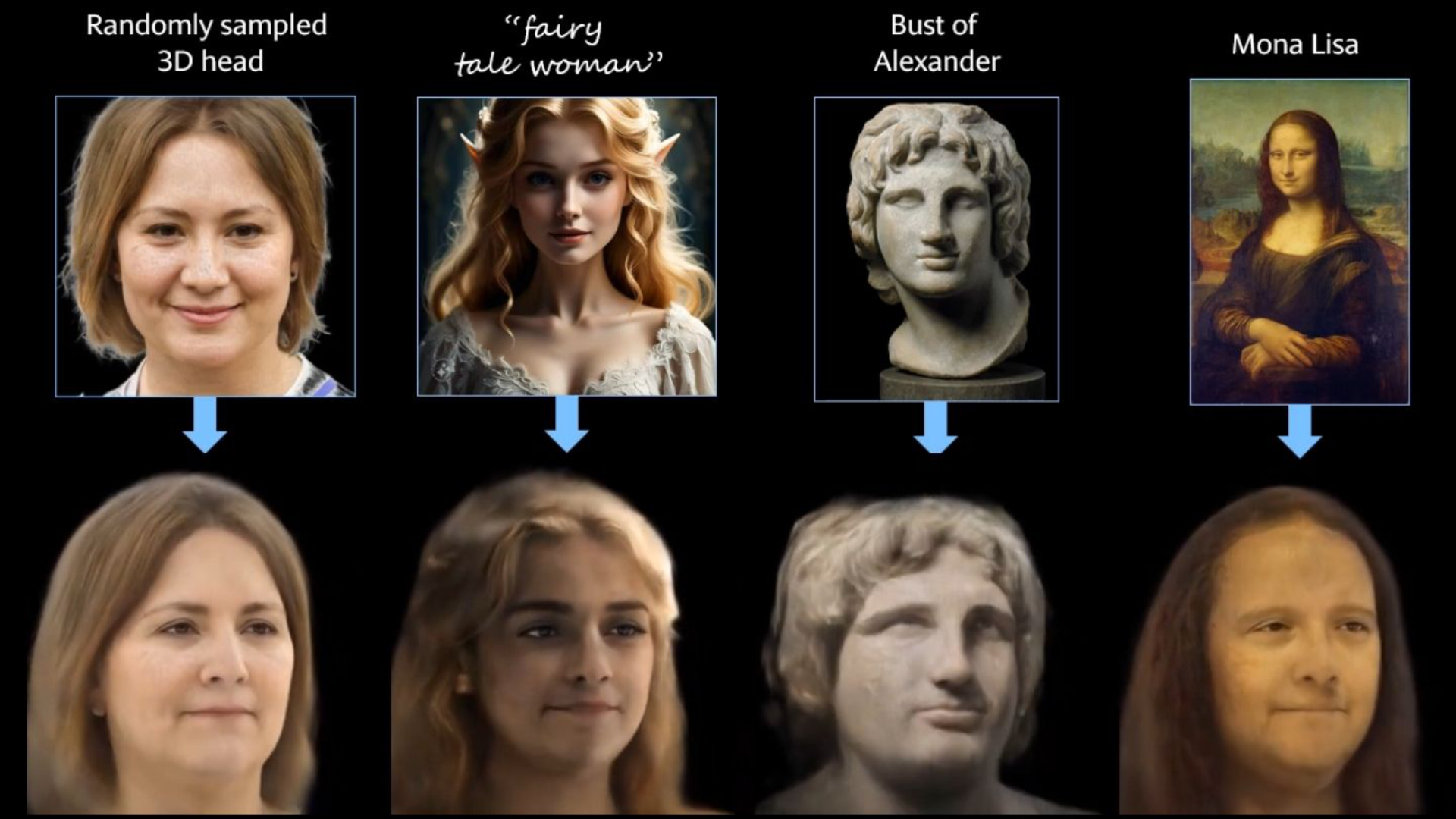
Researchers have developed a new method to create an animatable 3D avatar from just four smartphone photos.
The post Meta and TU Munich turn smartphone pics into lifelike 3D avatars in minutes appeared first on MIXED Reality News.
Meta’s support website now describes a “headset camera” permission for Quest headsets, suggesting the Passthrough API is launching soon.
While headsets like Quest 3 and Apple Vision Pro use cameras to let you see the real world, today only the system software gets raw access to these cameras. Third-party developers can use passthrough as a background, sure, but they don’t actually get access to it. They instead get higher-level data derived by the system, such as hand and body skeletal coordinates, a 3D mesh of your environment with bounding boxes for furniture, and limited object tracking capabilities. That means they can’t run their own computer vision models, which severely limits the augmentation capabilities of these headsets.
The exception is that on visionOS 2, Apple is now giving enterprise companies raw access to Vision Pro’s passthrough cameras for non-public internal apps, but this requires a special licence from Apple and is restricted to “in a business setting only”.
Meta announced the Passthrough API at Connect 2024 back in September, saying that it will “enable all kinds of cutting-edge MR experiences”.
Now, just over five months later, a Meta support page just went live describing a new “headset camera” permission which “allows an app to access the real-time passthrough camera feed from the front of your headset”.
The page was first spotted by VR enthusiast Luna, and gives three examples of how Quest apps could leverage the passthrough view:
• Object recognition. Developers can create apps that recognise and use specific objects within your real-environment. For example, a digital board game that incorporates physical game pieces or boards.
• Location recognition. Developers can create experiences that respond differently depending on where the camera feed shows you are located . For example, indoors or outdoors, at a famous landmark, or in a specific type of room.
• Other machine learning functionality. Developers are able to run custom machine learning models against data from the real-time camera feed. This could be used for retexturing/shading, games involving participants who are not wearing headsets, person/animal detection, or any number of custom industrial/training use-cases.
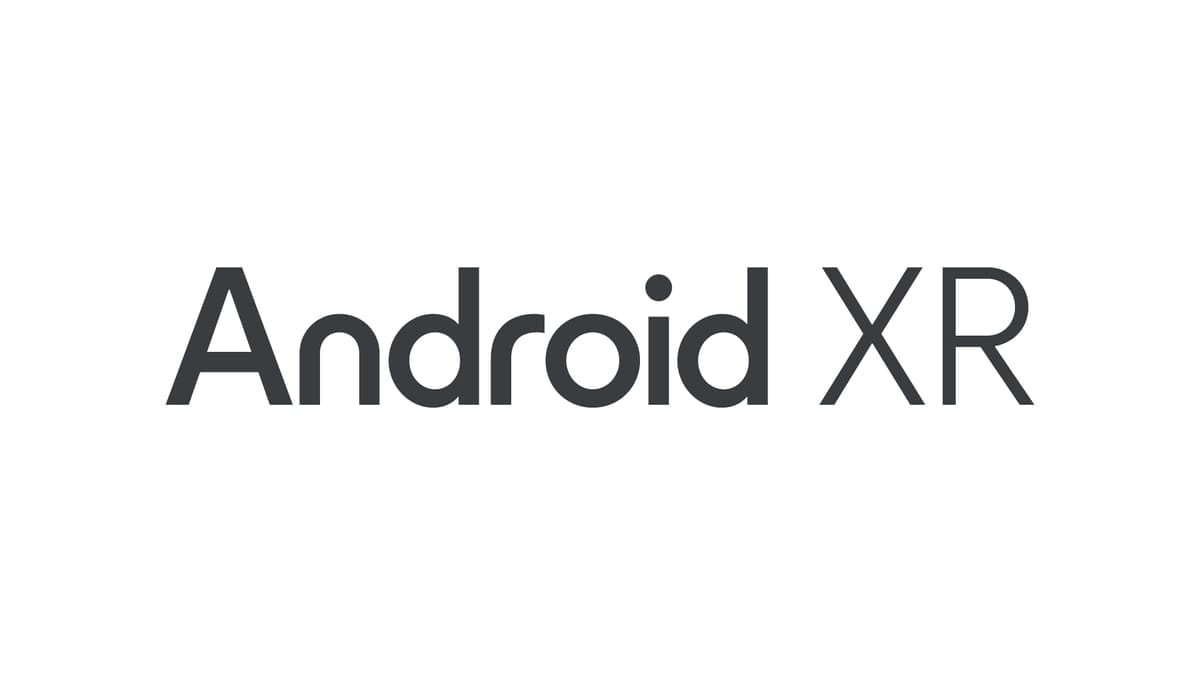
Meanwhile, Google confirmed last month that Android XR, its upcoming OS set to debut in Samsung’s standalone headset, will let apps access the passthrough camera view at launch.
Meta researchers built a “large reconstruction model (LRM)” that can generate an animatable photorealistic avatar head in minutes from just four selfies.
Meta has been researching photorealistic avatar generation and animation for more than six years now, and its highest-quality version even crosses the uncanny valley, in our experience.
One of the biggest challenges for photorealistic avatars to date has been the amount of data and time needed to generate them. Meta’s highest-quality system requires a very expensive specialized capture rig with over 100 cameras. The company has shown research on generating lower quality avatars with a smartphone scan, but this required making 65 facial expressions over the course of more than three minutes, and the data captured took multiple hours to process on a machine with four high end GPUs.
Now, in a new paper called Avat3r, researchers from Meta and Technical University of Munich are presenting a system that can generate an animatable photorealistic avatar head from just four phone selfies, and the processing takes a matter of minutes, not hours.
On a technical level, Avat3r builds on the concept of a large reconstruction model (LRM), leveraging a transformer for 3D visual tasks in the same sense that large language models (LLMs) do for natural language. This is often called a vision transformer, or ViT. This vision transformer is used to predict a set of 3D Gaussians, akin to the Gaussian splatting you may have heard about in the context of photorealistic scenes such as Varjo Teleport, Meta’s Horizon Hyperscapes, Gracia, and Niantic’s Scaniverse.
The specific implementation of Avat3r’s animation system isn’t driven by a VR headset’s face and eye tracking sensors, but there’s no reason it couldn’t be adapted to leverage this as the input.
However, while Avat3r’s data and compute requirements for generation are remarkably low, it’s nowhere near suitable for real-time rendering. According to the researchers, the end result system runs at just 8 FPS on an RTX 3090. Still, in AI it’s common to see subsequent iterations of new ideas achieve orders of magnitude optimizations, and Avat3r’s approach shows a promising path to one day, eventually, letting headset owners set up a photorealistic avatar with a few selfies and minutes of generation time.
visionOS 2.4 beta 2 is now available for Apple Vision Pro, and it brings Apple’s new Spatial Gallery platform.
Apple announced Spatial Gallery in February as part of visionOS 2.4, which is set to ship in April. The first beta was released alongside the announcement, but didn’t include Spatial Gallery. The second beta, available now, does.
Spatial Gallery is a new visionOS app from Apple that features a curated collection of spatial photos, spatial videos, and panoramas. Spatial photos and spatial videos are Apple’s term for stereoscopic 3D photos and videos.
Apple promises Spatial Gallery will offer “remarkable perspectives from photographers like Jonpaul Douglass and Samba Diop; new stories and experiences from iconic brands including Cirque du Soleil, Red Bull, and Porsche; behind-the-scenes moments from Apple Originals like Disclaimer, Severance, and Shrinking; and special moments from top artists.”
Rather than being an open platform like YouTube or Vimeo, which added spatial video support in October, Apple’s Spatial Gallery is highly curated closed platform, offering quality over quantity.
To enable downloading beta Apple operating systems you just need to sign in with your Apple ID on the Apple Developer Center website at least once. You don’t need to join the paid Apple Developer Program, but you will need to accept the terms of the Apple Developer Agreement.
Then, in the headset, navigate to Settings -> General -> Software Update -> Beta Updates and select “visionOS 2 Developer Beta”.
Note that installing a beta version of an operating system is only recommended if you’re willing to accept bugs, instability, and the small chance it could put your device in a state requiring a factory reset. Some apps may even stop working. In exchange, you’ll get to try out the new features and improvements in advance.
Spatial Gallery is available as part of visionOS beta 2 in all Apple Vision Pro countries except for mainland China.
GORN 2 expands upon the original game well so far, delivering absurdly hilarious combat in our preview while remaining distinctly familiar.
Nearly a decade after Free Lives’ brutal gladiatorial hit GORN first appeared in early access, last week’s GORN 2 announcement took many of us by surprise. Co-developed by Cortopia Studios (Escaping Wonderland) and the original studio, this upcoming sequel has a clear goal of delivering “everything GORN was but more.” After spending 45 minutes with a preview build, I’d say it’s currently doing a fine job.
GORN 2 – PC VR footage captured by UploadVR
Having ascended to the afterlife following the first game, GORN 2 now finds you in a heavenly realm where we’re killing the gladiators we previously killed yet again. You’d almost feel sorry for them, were it not for the whole “repeatedly trying to kill you” deal they’ve got going on. Our main task involves assisting the deposed God of the Afterlife as we stop his five bastard sons across five realms.
This demo only featured the second realm alongside a small hub area, our only companions being the God of the Afterlife and the gladiator ghosts sometimes spawning from a soul pool. Learning that access to each realm is gated by your ‘epicness’ meter tells you what to expect with GORN 2’s humor, to say nothing of the fact you can give enemies the middle finger.
Levels are fittingly selected by skewering a gladiator’s head on a pike, though you can’t freely choose your weapons. Finding new ones across realms unlocks them in a Custom Mode that I couldn’t access. Ranged options like bows are my usual choice in VR games, though a strong selection of bendable melee weapons like cleavers, maces, axes, and swords back this up. One sword even grows as you earn more kills, letting you wield your ridiculously oversized weapon (behave) in full glory. Frankly, it puts Cloud Strife’s Buster Sword to shame.

There’s something much more satisfying about getting up close for the cartoonish violence over ranged strikes. Dismemberment, decapitations, watching the fallen fighter’s eyes pop out would normally make for a grim spectacle, yet GORN 2’s stylish cel-shaded visuals do this bloody spectacle justice. On Steam, the presentation looks gorgeous and while there’s a bit of jank currently – some weapons jitter a lot when being used – the performance ran smoothly.
My desktop uses an Intel i9 16-Core Processor i9-12900 (Up to 5.1GHz), 32GB RAM – Corsair VENGEANCE DDR5 5200MHz, and a 16GB Nvidia GeForce RTX 4070 Ti Super. This preview was conducted using a Meta Quest 3 via Virtual Desktop. The minimum/recommended specs on Steam are currently unconfirmed.
Each event is split into four different rounds that culminate with a trickier fight, starting by raising your fists. This formulaic structure is broken up with bonus objectives in round three that can be easy to miss if you aren’t paying attention. That’s usually some variation of “kill x number of enemies” with a particular weapon, so I’d love to see some more creative objectives.
Each arena comes with its own distinct traps and for the second realm, this lava-filled domain is big on cooking. Watching giant spatulas swatting people below keeps me on my toes, whereas pushing enemies into the lava creates some hilarious ragdoll moments. Using a Warhammer-like weapon that’s honestly just a leg of meat, slapping opponents into these fiery pools and watching their corpses bounce away to the after-afterlife (let’s call it that) is hilarious.
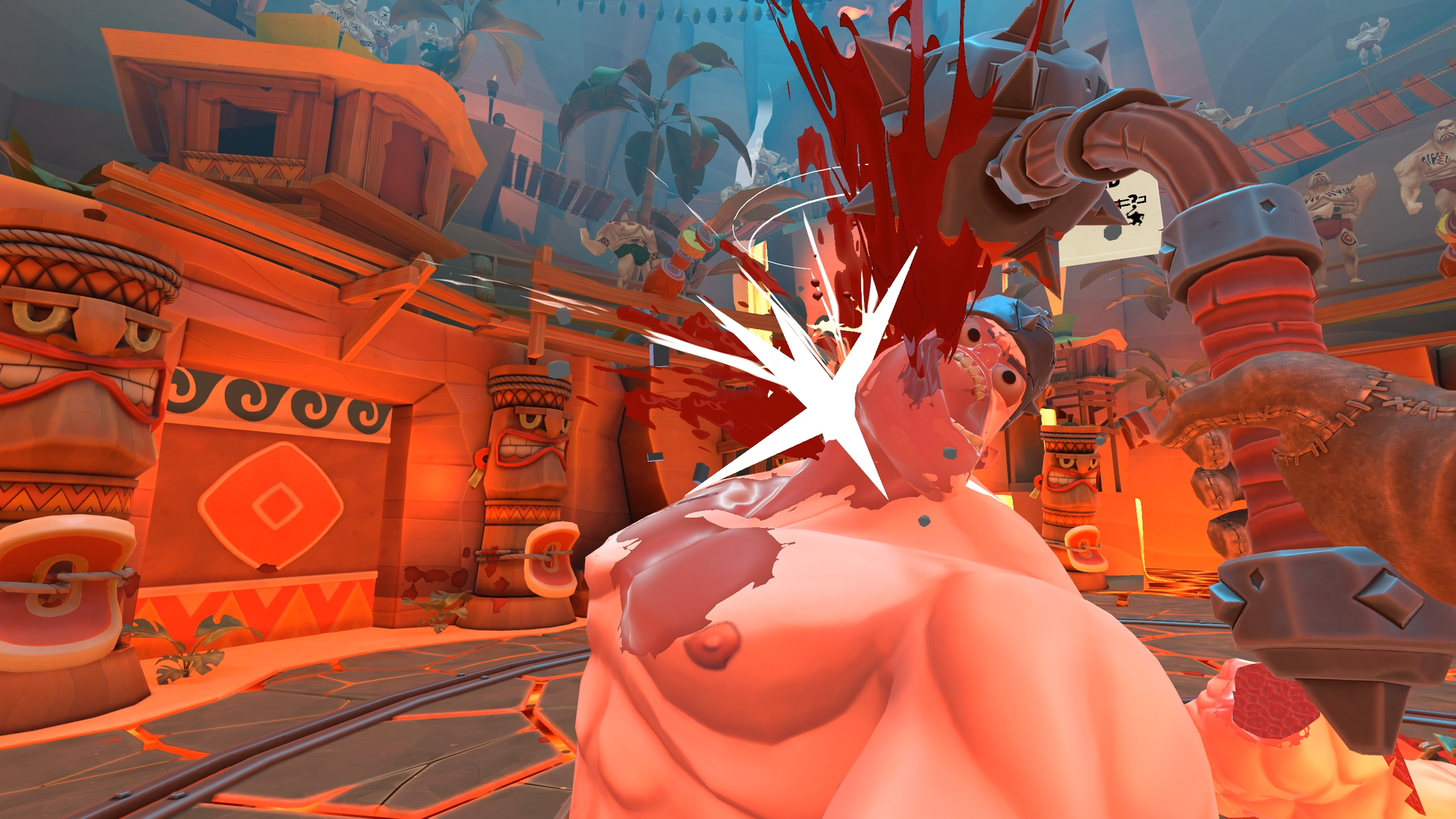
My biggest criticism so far relates to the AI behavior, which isn’t typically a concern until traps emerge. These foes have no self-preservation instincts, and enemies will blindly walk into obvious traps just because I’m in the direction they’re heading towards. That made some fights all too easy, so I hope that gets adjusted in the full release.
Speaking of difficulty, anyone after a challenge should turn on the hardcore mode from the settings for less health and to make enemies appear faster. The standard setting is a bit easy, and I only died once on the default settings. Killing enemies restores health, as does killing the chickens that are also out to hurt you. Defeating these fowl-tempered foes quickly roasts them into an edible snack.
If you’re interested in seeing more gameplay directly, check out Don’s recent livestream below.
As for me, GORN 2 promises the sequel I never realized I wanted. What I’ve seen so far is delivering satisfying evolutionary changes that should appeal to fans of the original game. The comedic over-the-top brutality ties together well, the visuals look great, and a strong sense of humor ties it all together. There’s still plenty more to try and right now, I’m optimistic about the full game.
GORN 2 launches in 2025 on the Meta Quest platform, Steam, and PlayStation VR2.
The New Salsa Academy is a VR and mixed reality fitness game that teaches you how to dance one step at a time – literally.
Developed by Dance Reality, The New Salsa Academy is an educational fitness game that teaches players the art of salsa in a virtual studio. Led by real-world instructors Rodrigo Cortazar and Asya Sonina, players cycle through a lesson plan that begins with a basic step and leads all the way up to sassy turns and dramatic twists. The structure of each lesson is broken up into bite-sized chunks, culminating in a partner practice with New Salsa Academy’s AI dance partner.
Like in real-world dancing, The New Salsa Academy begins by asking whether you’d like to be in a leading or following role, with the teacher matching your choice. In my hands-on via Quest 3, I based my choice on what limited experience I had prior, starting with a beginner-friendly one-two step as a ‘follower’. From the beginning, I was pleased to see how slow they were going, presenting the information in a colloquial but professional manner. Video of the teachers are rendered into the space, offering a realistic look at how the movement would appear on a human body rather than a digital one — a seriously impressive feature.
Once you understand the specific move in a given lesson, The New Salsa Academy asks you to perform it to a beat, with the headset tracking not only your arm positioning but also your feet. As you perform your best quick-quick-slow steps, your digital footprint dims and lights up per the pressure you’re applying to the ground. For this to work accurately, it might be worth resetting your play space, so the boundaries match your specific room.
After mastering an essential move solo, you move onto the same process, except this time, you have a semi-clear blue partner to dance with. As you raise your hands to meet theirs, the figure’s upper body snaps like a magnet to your position and moves with the beat. It is admittedly a bit unnerving, especially considering how close-quarters the figure gets while performing the movements. At least I couldn’t feel their hot breath in my face. Still, it’s valuable to understand my movements across from another human shape considering salsa is, by all accounts, a two-person sport.
As you conclude each mid-lesson evaluation, you’ll get a small contextual feedback message explaining where you went wrong. For example, halfway through my practice, I got lazy and didn’t make intentional movements. The New Salsa Academy was quick to tell me I made a mistake towards the end of the test and to retry it at a slower pace. Between the informative but affirmational instructors and the targeted feedback, I’m forming an understanding of not just the basics of the dance, but how to improve my physicality, too.
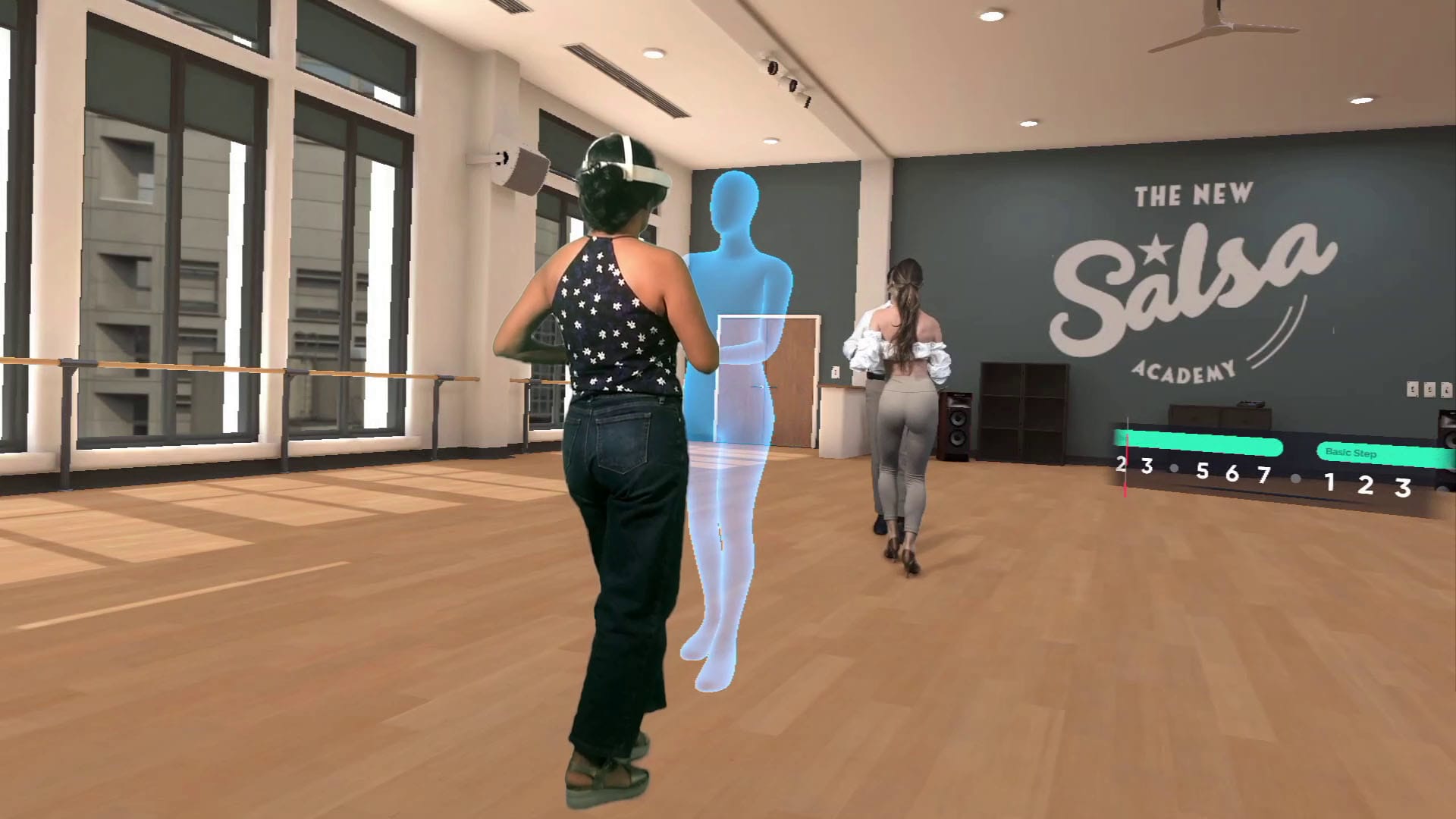
As far as fitness VR apps go, it’s not exactly The Thrill of the Fight, with The New Salsa Academy focusing on honing your dance skills instead of burning calories. That’s not to say you don’t work up a sweat, it just feels more like entry-level calisthenics than HIIT. Thankfully, salsa is a deliberate and posture-focused style of movement that feels surprisingly at home in VR. I never feel unwieldy when moving due to this, despite having a Quest 3 strapped to my head.
Dance Reality has also added a new Challenge Mode with a new update that leverages the skills you’ve learned in regular classes in a new competitive format. In the Challenge Mode, players work through entire routines, racking up points for timing and accuracy. The cleaner your moves are, the higher your rank on the global leaderboard. To access this mode, players have to complete a series of classes to participate, with the initial barrier to entry requiring the completion of six basic lessons — a nice touch that encourages a considered engagement with the artful rhythm of Salsa.
The New Salsa Academy is available now on Quest.
Rockstar Games has acquired the studio that worked on Grand Theft Auto: San Andreas VR.
Announced today via Business Wire, Rockstar Games confirmed its acquisition of the Sydney-based studio Video Games Deluxe. Stating the team will be renamed to Rockstar Australia, the studio’s previously released work includes the 2017 re-release of L.A. Noire and L.A. Noire: The VR Case Files, alongside updates to Grand Theft Auto: The Trilogy – The Definitive Edition.
While this isn’t mentioned in the press release, likely due to being unreleased, Video Games Deluxe was also the studio working on the Grand Theft Auto: San Andreas VR port for Quest. While July 2020 saw Video Games Deluxe reveal it was working on an ‘AAA open world‘ VR game, news emerged shortly after San Andreas VR’s reveal that the studio was behind the adaptation.

Initially announced back in 2021, Mark Zuckerberg revealed the news during that year’s Connect conference, though a lengthy silence followed that announcement. Though Rockstar’s adaptation has not officially been cancelled, last August Meta confirmed that the VR version is “on hold indefinitely while we both focus on other projects.”
Whether we can expect to see Rockstar Games returning to VR anytime soon isn’t clear, though evidence suggests the studio’s at least been looking into it. Back in 2023, actor Michael Ursu listed an “Undisclosed Rockstar Game” under the VR section of his resume. However, that was swiftly deleted once the entry was publicly spotted.
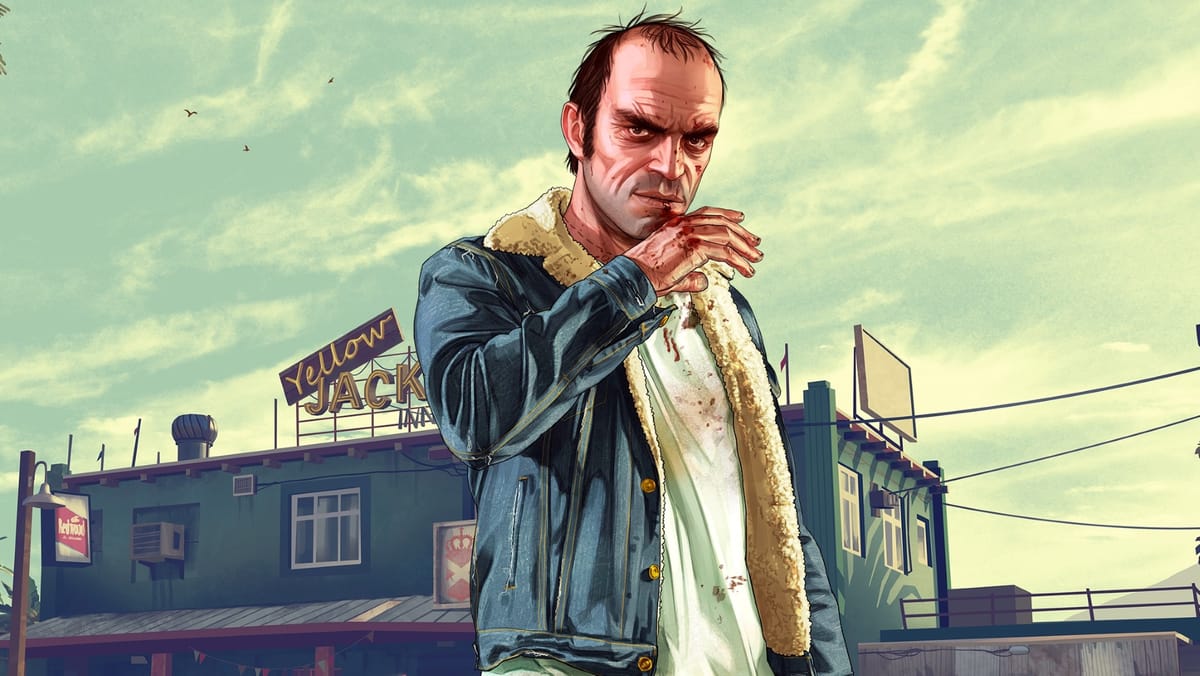
With mixed reality gaming still in its relative infancy, we interviewed Detective VR’s team about designing a narrative-driven experience for newer tech.
No matter your medium, detective stories often remain a compelling sell for many of us. It’s one thing to witness these suspenseful events unfold across a film or novel, but another entirely when games let you be the active investigator. A good mystery arguably lets you feel smart while actively putting the work in to uncover clues. Following prior attempts like L.A. Noire: The VR Case Files and Home Detective, presenting its case next is Detective VR.
Out now on Quest after starting development in 2022, Detective VR takes inspiration from Minority Report, Return of the Obra Dinn, and Immortality. Scenes swap between immersive VR environments where you investigate for clues, while mixed reality then lets you piece the evidence together on a board filled with photos and string.
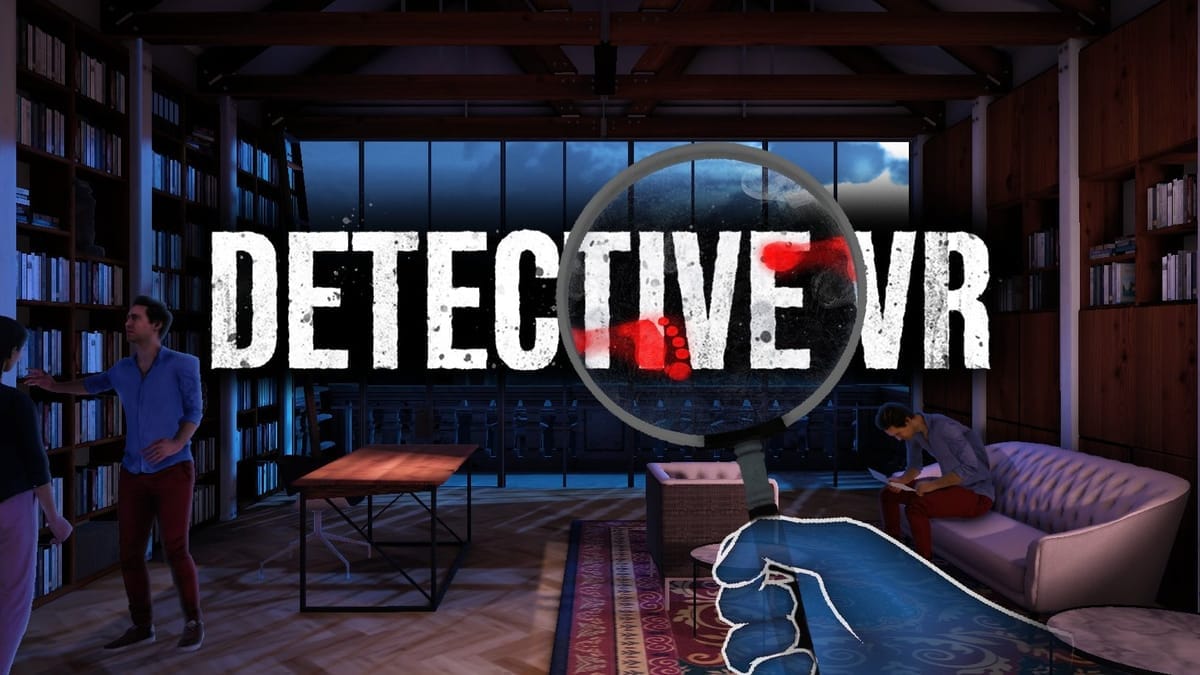
Our review awarded it 3.5/5 stars, calling it an “impressive effort” that’s both inspiring and suspenseful. While this review was by Josh Petersel, I recently attended a separate hands-on event in London. My initial thoughts are largely aligned with Josh after playing for two hours, which was followed up by an interview with the team.
Speaking with the game’s director, Alexandre Garland from Studio Chipo y Juan, and Valem Studio’s CEO, Quentin Valembois, both developers had prior experience with games before working on Detective VR. Valembois has a YouTube channel dedicated to VR development, while Garland previously designed escape rooms and his focus is on the player experience.
“I want [the players] to have an emotional rollercoaster, and to make everything easy for them. I don’t mean an easy game, but the interaction needs to be simple. Because when you are struggling to remember what you need to do, you are not connecting with it.”
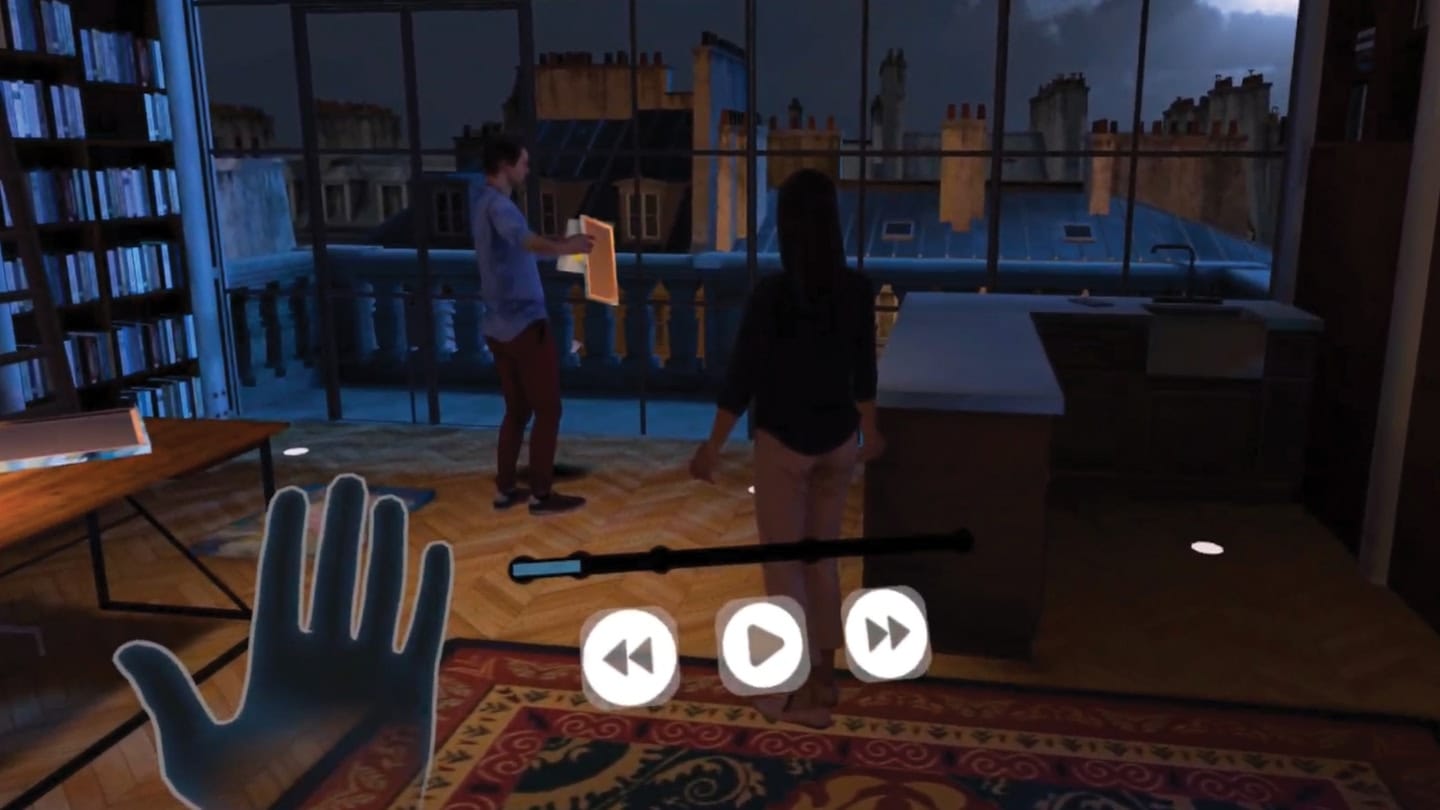
The team avoided too many tutorials to keep things natural, and Valembois also highlighted the game’s use of hand tracking controls. Quest’s Touch Controllers are supported, but everything in Detective VR was designed with hand tracking in mind. This created some initial challenges.
“An example of this is scanning objects by taking pictures. The first thing we tried to do was have a physical Polaroid that you can grab with your hand and that you could activate. It was easier to do with the push of a button because you had a big Polaroid in your hand, which worked, but it was unreliable. With hand tracking, you have no button to push, and we initially used the index curl to do it. That worked, but it didn’t feel good to do that little movement every time you press.”
This saw the team try to find common ground that suits both hand tracking and controllers, leading to the idea of forming a big square to take photos. This involves doing a pinch motion with both hands, then moving your hands apart to create a larger frame. That frame is your camera, and a successful shot of evidence sees you keep the photo.
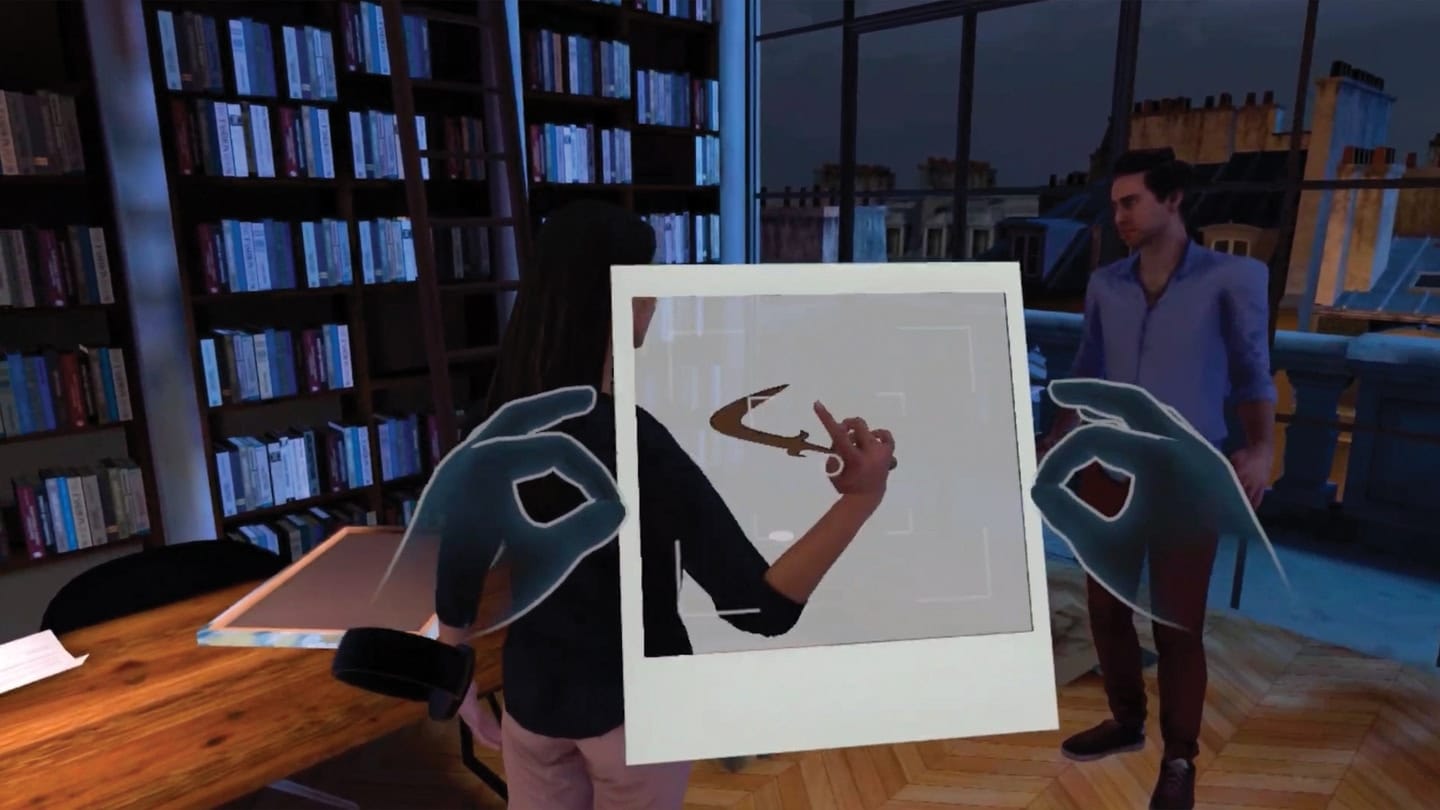
A key point that comes up during our discussion is the fact that mixed reality is a comparatively new medium. Garland explained that it’s about finding something new, believing that not everything with MR has been “figured out” like with VR. Valembois states there’s “not a common idea of how everything needs to be done,” calling this another challenge in making Detective VR.
“We are just eager to find out how new people that are not familiar with hand tracking or even VR will feel about the game. We have a good feeling about how it can be easily learned, I think we did a good job at explaining how the game works. We made all the interactions simple. At the end of the day, even if the rules of XR and hand tracking are not written, we hope that what we’ve done can help even newcomers to learn how to play our game.”
Asked about the considerations that went into Detective VR’s design, Garland says that it’s sometimes “better to do something more simple, and to be focused on that, than to be distracted by something that is ambitious.” He’s more concerned with the player experience than with new features that don’t necessarily work as well as originally imagined.
“Our goal was not to create any friction between the player and the story; the interactions had to become natural, almost invisible. That’s why mixed reality and hand-tracking were so important… you feel at ease, interacting in the comfort of your environment.”

The team considered using occlusion, spatial anchors and other MR elements and while these didn’t work for Detective VR, Valembois states they’re open to taking another look in the future. He would rather not add something “just for the sake of it” if it’s to the player’s detriment, saying “it needs to be valuable to the game” while also being mindful of feature creep.
Even with these challenges, Valembois considers it exciting to be working on this type of new technology to create a game that’s more unique. Like anything though, it’s about finding the right balance.
“It was so much fun to work on, we made this game with passion while trying to find some cool things to also add. We really wanted to push some new features because we like them but on the other side, we had to sometimes remove them. It’s a hard balance to find.”
Detective VR is available now on the Meta Quest platform.

This week, you can expand your Playstation VR 2 game library at a bargain price. Sony is giving you up to 60% off.
The post Playstation VR 2 Sale: Don’t miss out on these 5 VR games appeared first on MIXED Reality News.
The price of PlayStation VR2 has now been cut to $400, and this includes Horizon Call of the Mountain.
The price cut was announced on Thursday, and has now gone live in the US, nine days after the headset’s two-year anniversary. In the UK the new price will soon be £400, in the EU it will be €450, and in Japan it will be ¥66,980.
The new price applies to both the regular package and the bundle that includes Horizon Call of the Mountain, so you should always grab the latter if it’s available.
Originally, since the headset launched in February 2023, these were priced at $550 and $600 respectively. For a week in summer the headset was on sale for $350, and for six weeks over the holidays the bundle with Horizon Call of the Mountain was on sale for $350.
With the new price, you can get a PS5 and PlayStation VR2 together for $800, or a PS5 Pro with it for $1100.
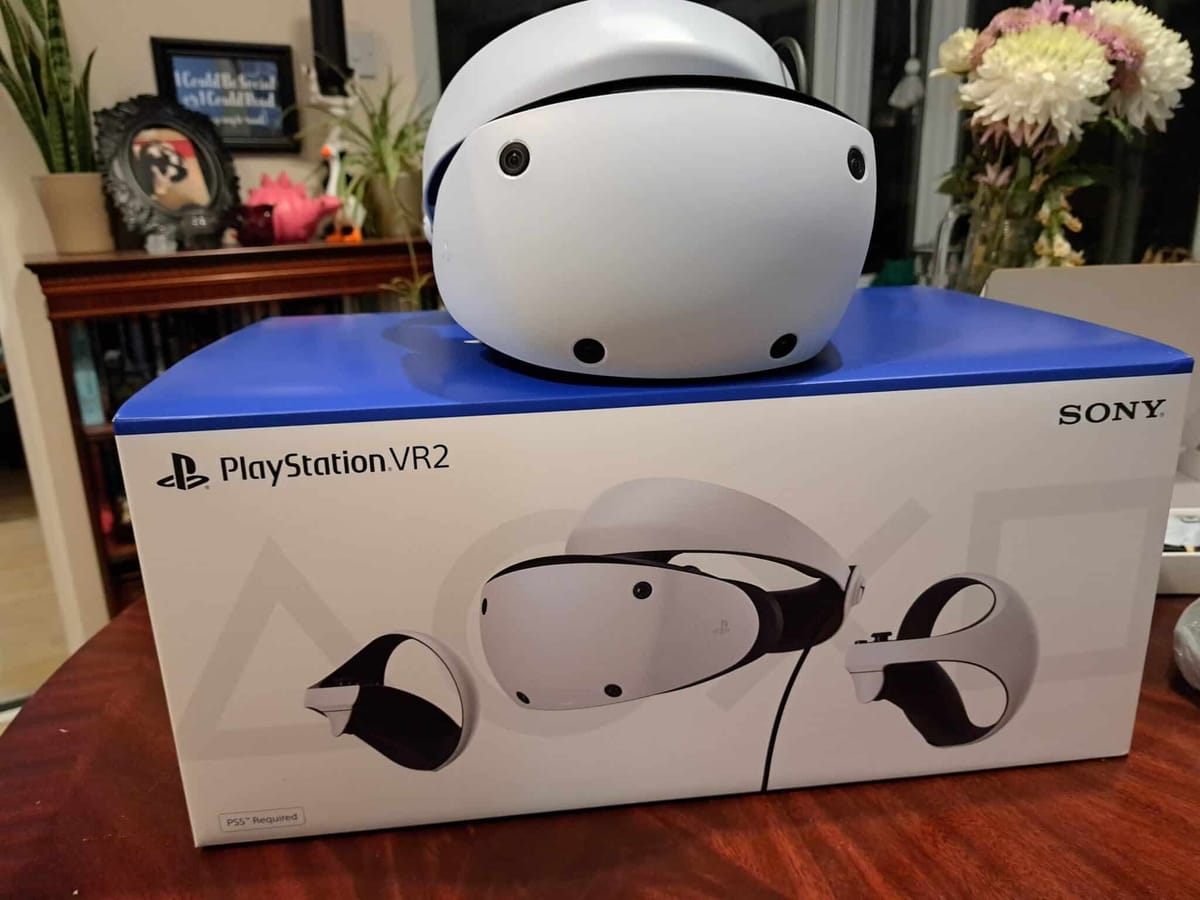
At $550, we had been cautioning against buying a PlayStation VR2 for use with a PS5 at full price, as Sony’s content commitment to the platform is questionable at best.
While Sony delivered strong launch content with AAA titles like Horizon Call of the Mountain and Gran Turismo 7, the company has failed to deliver anything like this since. Two years in, the only new first-party games Sony released are My First Gran Turismo and Firewall Ultra, the latter of which was received so poorly it led to the studio’s closure.
Still, the platform has seen a steady stream of the top indie VR titles ported from Quest and SteamVR, and this season benefited from the launch of AAA cross-platform VR titles, including Metro Awakening, Alien: Rogue Incursion and Skydance’s Behemoth. Further, IO Interactive plans to bring the Hitman: World of Assassination trilogy to PS VR2 in March.
Also, since summer PlayStation VR2 is no longer confined to PS5. If you have a gaming PC, you can pick up the PC adapter for around $60 and access a plethora of new content on SteamVR.
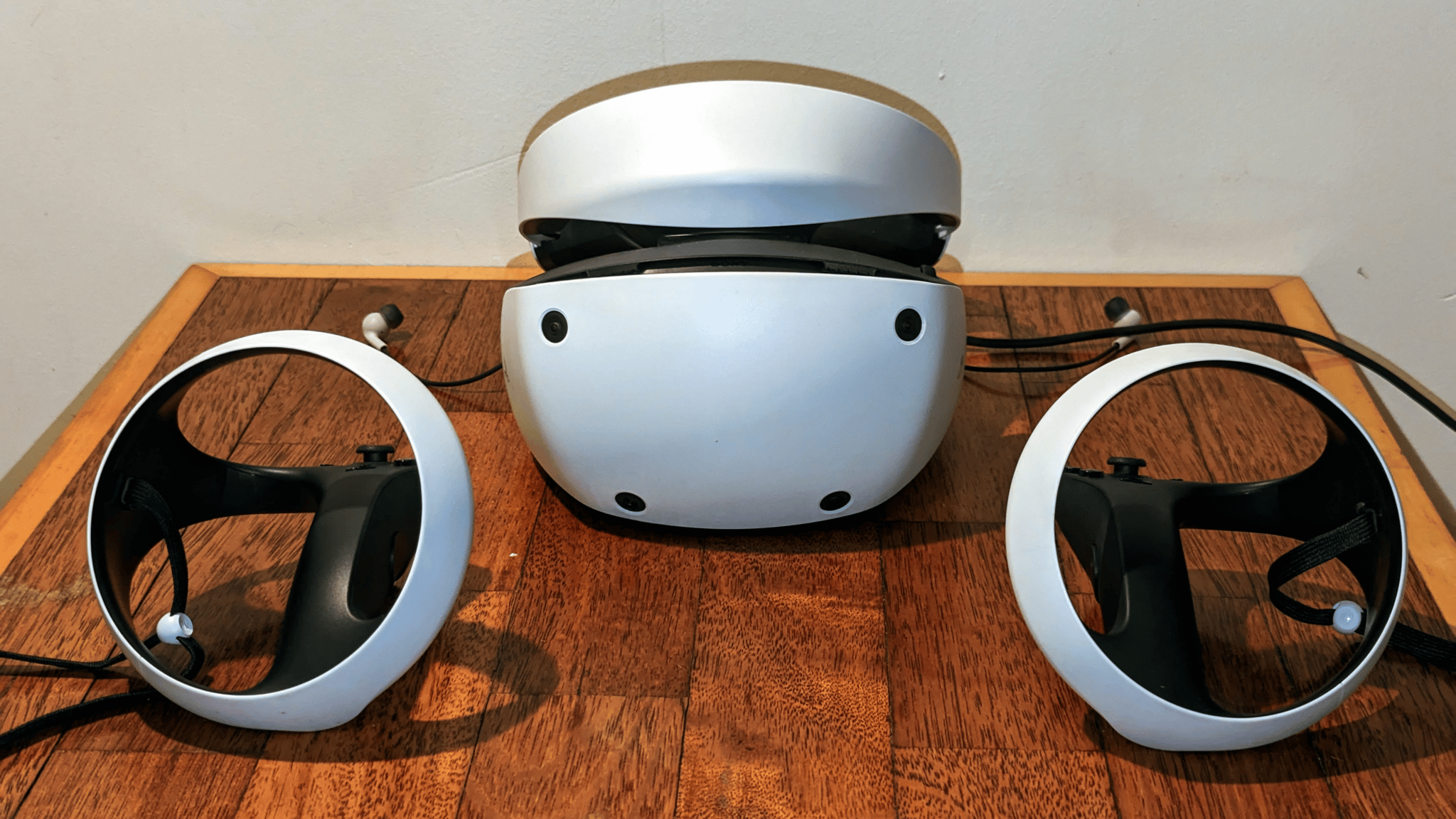
At $400, whether it be for use on PS5 or on PC, PlayStation VR2 is a significantly more attractive proposition than it was before.
This article, originally published on Thursday to cover the price cut’s announcement, has been updated to reflect the new price going live in the US.
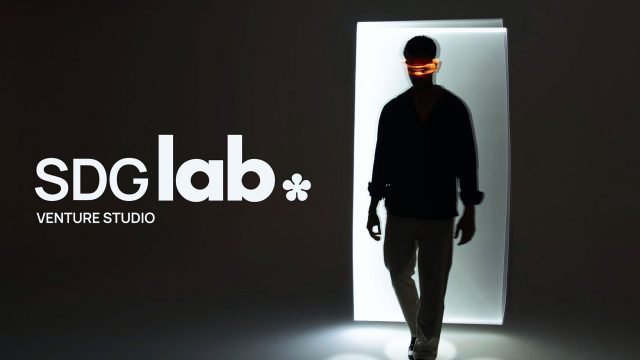
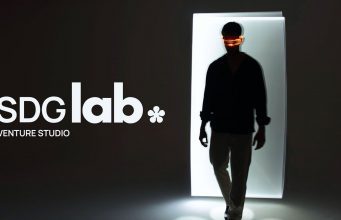
Social Discovery Group, the company behind Dating.com and DateMyAge.com, announced it’s launched a venture studio that aims to “transform virtual intimacy into the new normal” by backing early-stage startups in AI-powered communication, XR advancements, and social discovery platforms.
Called SDG Lab, the group has pledged an annual investment of $20 million by providing a “straightforward” fundraising process, wherein entrepreneurs can secure seed funding for product development and additional capital for scaling.
SDG Lab’s most notable investments include virtual dating platform ‘VR Chat&Date’, and niche-based dating apps Kiseki, Flure, and AstroLove.
Led by Alex Kudos, former CMO of Social Discovery Group, SDG Lab is also providing startups building social discovery and connection technologies with resources, such as legal assistance, back-office support, tech infrastructure, and marketing expertise.
“Social interaction is evolving, and digital intimacy is the next frontier,” said Alex Kudos, CEO of SDG Lab. “At SDG Lab, we’re not just funding ideas—we’re co-creating the future of human connection. By investing in and partnering with bold entrepreneurs, we are building technologies that make meaningful relationships possible, no matter where people are in the world.”
“Virtual relationships and AI-driven connections are no longer science fiction—they are a fundamental part of our digital lives,” added Kudos. “SDG Lab is building the next generation of products that will shape how people connect, engage, and build relationships online.”
The post Online Dating Company Announces $20M Annual Fund to Accelerate “virtual intimacy” Startups appeared first on Road to VR.

The railroad simulator Train Sim World VR launches exclusively on Meta Quest VR headsets by the end of the month.
The post Train Sim World VR is coming exclusively to Meta Quest this month appeared first on MIXED Reality News.
From a golfing hit to a roguelike shooter, these are the Meta Quest+ monthly games for March.
The Meta Quest+ subscription offering lets you redeem two pre-selected games each month, alongside a rotating selection of titles in its Games Catalog.
Redeeming these monthly games ensures continued access while your subscription remains active. Should you cancel your membership, previously redeemed games become accessible again if you resubscribe.
Quest+ is available on Quest 2, Quest Pro, Quest 3, and Quest 3S.
The latest batch of redeemable monthly games are now live, following February’s selection of Budget Cuts Ultimate and PowerWash Simulator VR. Available now for subscribers until March 31, 2025, here’s what you can download.
GOLF+ remains one of the oldest hits on Quest, and it continues delivering regular post-launch updates. Playable solo or in online multiplayer, the base game includes three courses, while DLC courses are available as individual purchases or through a subscription pass.
Notably, developer GolfScope recently revamped the visuals for its original full course, which you can read about below.
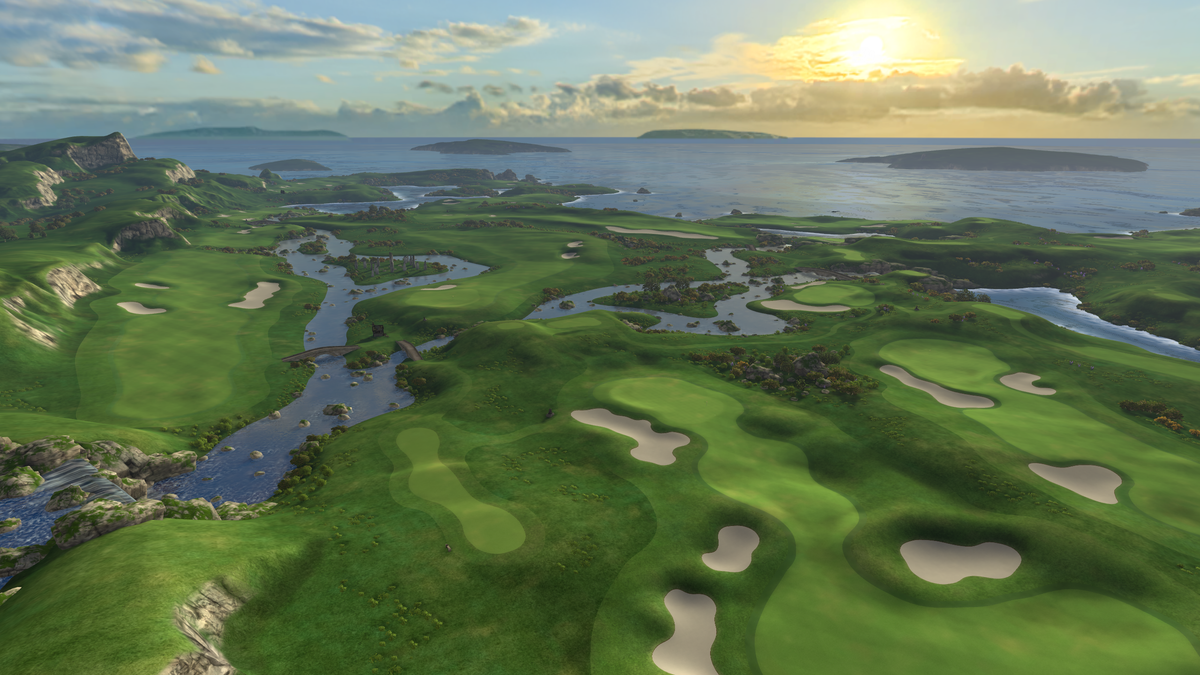
Developed by Funktronic Labs, VR roguelike shooter The Light Brigade mixes elements of World War 2 with mysticism. Featuring physics-based gunplay and procedurally generated battlegrounds, you’re tasked with restoring life to this world and freeing the fallen souls that perished here.
It’s seen a steady stream of post-launch updates since it first arrived two years ago, the most recent one being last November’s free ‘Phantom of Time‘ update.
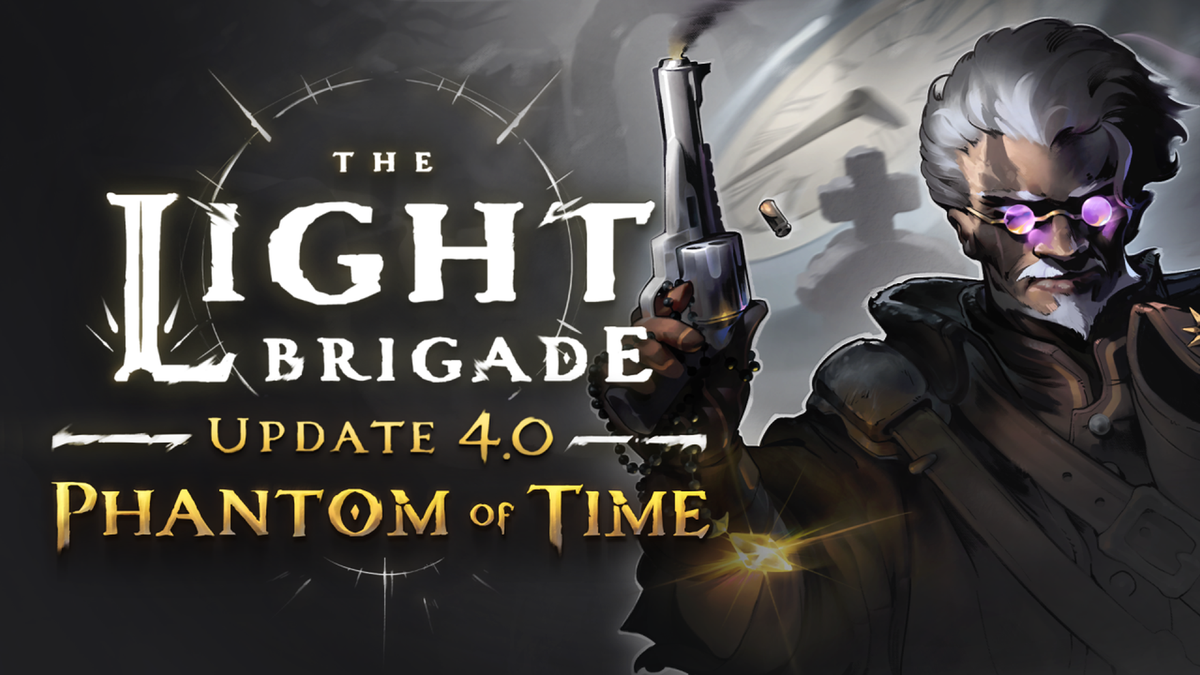
Alongside the redeemable monthly games, Quest+ continues to offer a games catalog of titles that any Quest+ subscribers can play. This month sees 2MD: VR Football Unleashed ALL☆STAR, Fruit Ninja, Jurassic World Aftermath Collection and Until You Fall leave the service, while new additions include Angry Birds VR and Broken Edge.
Here’s the full Quest+ Games Catalog library as of March 3, 2025:
Meta Quest+ costs $8 per month or $60 annually.
Train Sim World VR: New York confirmed a release date, and it’s heading to Quest later this month.
Co-developed by Dovetail Games and Just Add Water, we first learned about Train Sim World VR: New York back in August. Following the recent launch of Train Sim World 5 on flatscreen platforms, this latest entry adapts the realistic urban train simulation series for Quest headsets with a new VR game set across New York state. Here’s the release date announcement trailer.
During the initial announcement, the team confirmed that you can ride in officially licensed MTA M3A and M7A train cabs across the Harlem Line. At the time, the studio stated you can explore “the rails of New York; discover the stations of Manhattan and The Bronx across a recreation of the MTA Harlem Line between Grand Central Terminal and North White Plains.”
You can start as a rookie engineer in the ‘Career Mode’ and take on challenges to advance your career, being able to compete with friends across online leaderboards for the best score. There’s also a ‘Journey Mode’ that lets you explore for collectables by hopping out of the train at each station. Outside of this, the game also uses a customizable New York apartment as your hub between missions.
Train Sim World VR: New York arrives on March 27 for the wider Meta Quest platform.
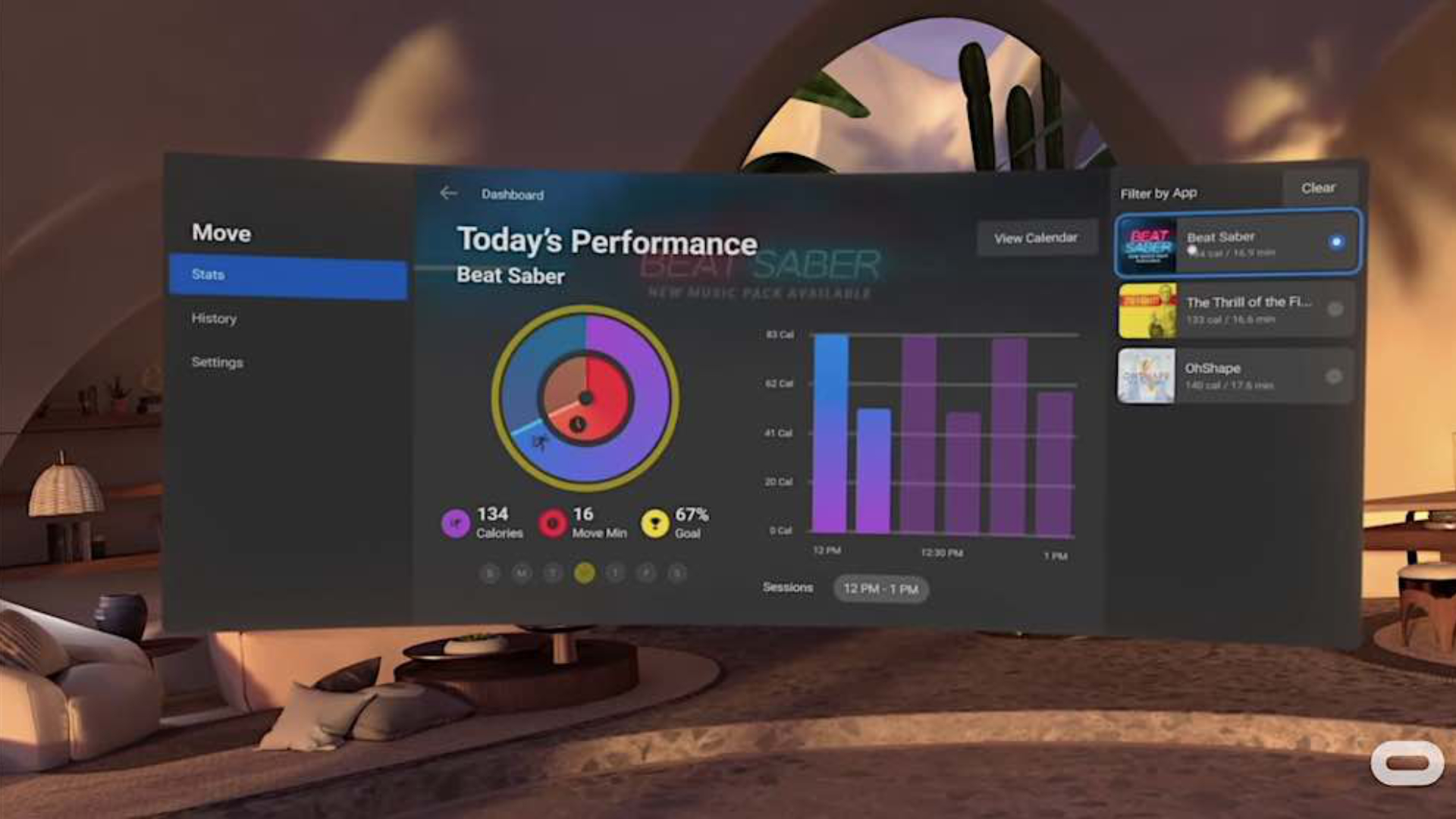
The Move fitness tracker will soon no longer be available for Meta Quest VR headsets, disappointing VR fitness fans.
The post Meta kills Move: No more fitness tracking on Quest VR headsets appeared first on MIXED Reality News.
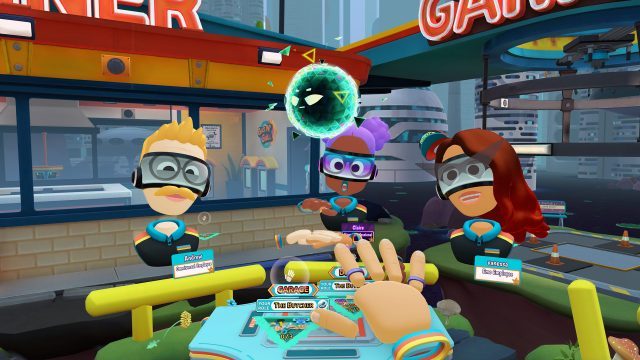
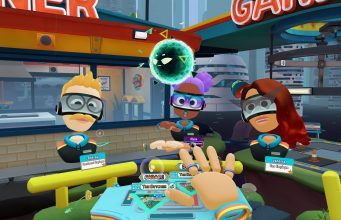
Owlchemy Labs has been a powerhouse of top-selling VR games, so when the Google-owned studio released Dimensional Double Shift in beta last year for free, it wasn’t immediately clear why the studio behind Job Simulator (2016) was making its first stride into freemium territory. With over 500,000 downloads now though, it’s evident they saw the writing on the wall: free-to-play on Quest is more lucrative than ever thanks to Quest 3S.
Like Job Simulator and its sequel Vacation Simulator (2019), Dimensional Double Shift tasks players with jobbing around a patently wacky universe, this time running a combination garage and diner station, where you and three other players can fix up both cars and grub for alien patrons.
There’s a little more under the hood than just being essentially a free-to-play multiplayer version of Job Simulator though. While Dimensional Double Shift replicates the sort of immersive and easy to pick up mechanics of the studio’s most successful titles, also being one of the first designed exclusively for hand-tracking, the launch of Quest 3S has seen a large influx of younger users, which undoubtedly has been a big driver.
And as it goes, younger gamers typically spend more time in social games, less money on premium purchases, and more on in-app purchases—meaning free-to-play games are seeing a big boost right now.
To boot, Dimensional Double Shift’s 500,000 download milestone follows a growing trend of veterans and indie studios alike hoping to strike it big with freemium titles, ostensibly aiming to replicate the viral success of Another Axiom’s breakout hit Gorilla Tag, which generated over $100 million in gross revenue last summer.
“We’re building a social-first platform, and these younger users are more likely to spend time with friends in multiplayer experiences and social hangout apps,” Meta’s Metaverse Content chief Samantha Ryan said last month. “They’re contributing to the rise of free-to-play titles—a pattern historically common on other platforms. We’re also seeing growth of younger users in Horizon Worlds.”
And Meta knows full well it needs a Gorilla Tag—or multiple Gorilla Tags—of its own on Horizon Worlds too. Meta recently announced a $50 million fund to incentivize the creation of new and improved content in Horizon Worlds, aiming to attract developers to build on the social platform what they might otherwise launch as self-contained apps, with the fund designed to pay out bonuses to creators of worlds that drive high visits, retention and in-app purchases.
The post ‘Dimensional Double Shift’ is Owlchemy Labs’ Fastest Growing Game, Tapping Into Quest’s Latest Freemium Trend appeared first on Road to VR.
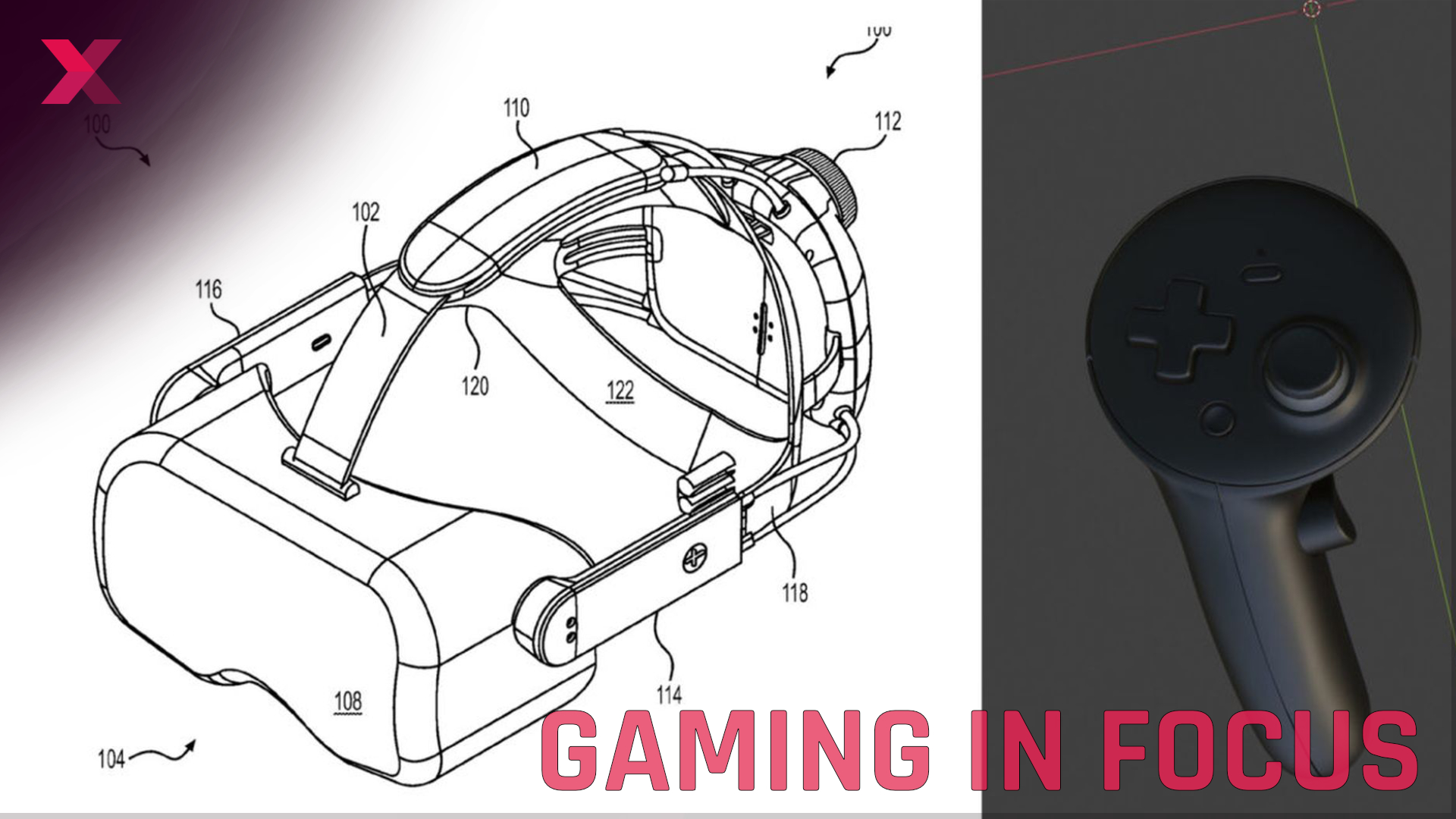
Valve’s next VR headset won’t save virtual reality in 2025, but it might hold the key to VR’s long-term future.
The post Deckard won’t sell a million units, and Valve is okay with that appeared first on MIXED Reality News.
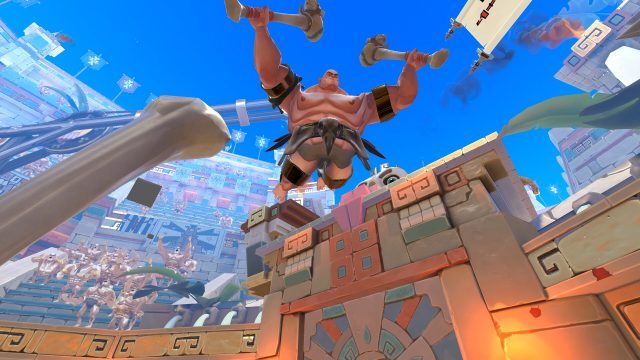
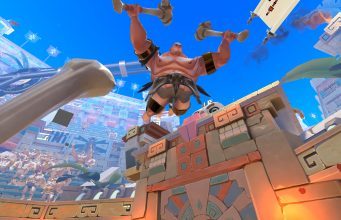
GORN (2019), the comically violent combat game from Free Lives, is getting a sequel that aims to bring a double dose of madcap melee mayhem, coming to all major VR headsets later this year.
GORN 2 is currently being developed by Cortopia Studios, with help from the teams at Free Lives and Devolver Digital. You might know Cortopia from its rash of VR games over the years, including Down the Rabbit Hole (2020), Escaping Wonder Land (2024), and Wands Alliances (2022).
Promising to be “bigger, wilder, and stronger than ever before,” Gorn 2 is slated to introduce new weapons, a host of arena traps, and new power-ups for even more supernatural strength (and size).
Check out the announcement trailer below:
Like the original, the cartoony, physics-driven combat sim is also packing in its fair share of boss battles, this time around boasting “five sons of the God of the Afterlife” to beat across an array of heavenly realms.
“GORN 2 is everything GORN was but MORE,” Cortopia says on the game’s Steam page. “More weapons, more enemies, more arenas, more traps, more power-ups, and more hilariously over-the-top combat. If you loved the first game, but still feel a raging yearning for more, GORN 2 will sate your blood-thirst.”
And once the boss-laden arenas are vanquished with your choice of over 35 weapons, Gorn 2 also promises a Custom Mode so you can craft your own challenges, and (of course) an Endless Mode to keep the shirtless barbarians coming your way non-stop.
There’s no exact launch date yet; Cortopia Studios and Free Lives say it’s coming to the Horizon Store for Quest 2 and above, SteamVR headsets, and the PlayStation Store for PSVR 2 later this year.
To see more, check out an early hands-on from YouTuber ‘Beardo Benjo’, which shows off a good slate of gameplay across the first few stages.
The post Classic Melee Combat Game ‘GORN’ is Getting a Sequel Later This Year on Quest, PC VR & PSVR 2 appeared first on Road to VR.